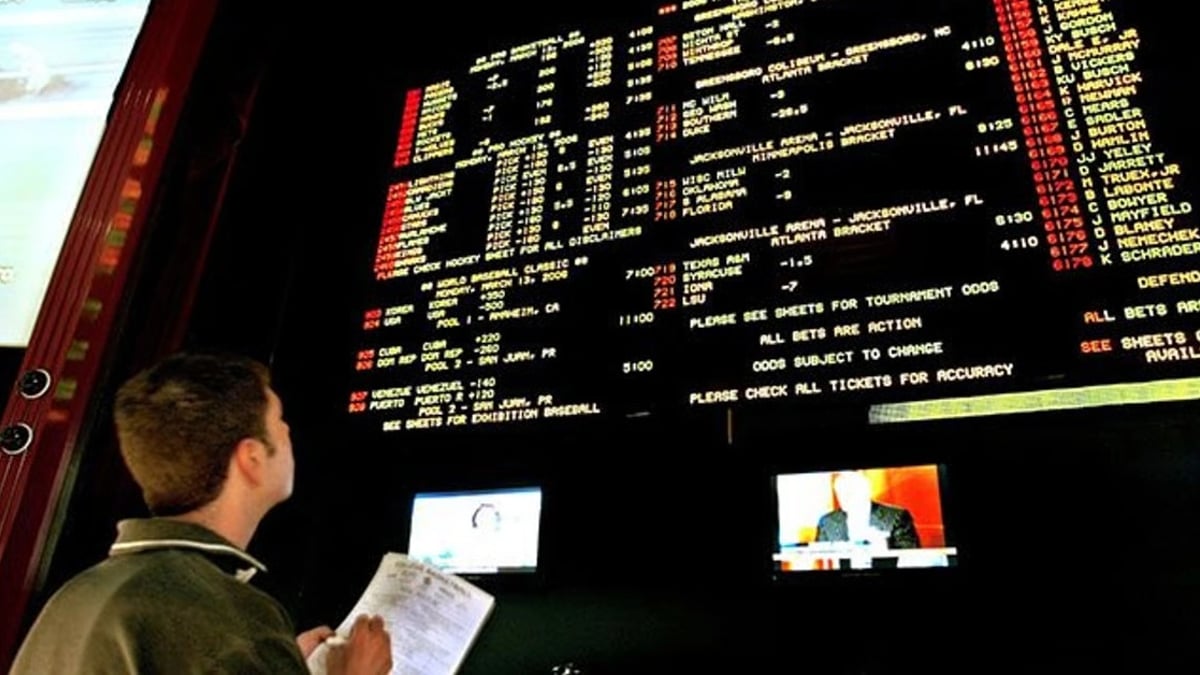Arbitrage Betting Strategy Guide

- #ad. 18+. Gamble Responsibly. Gambleaware.org. 21+. New customers in AZ, CO, CT, DC, IA, IL, IN, KS, KY, LA, MA, MD, MI, NC, NJ, OH, PA, TN, VA, VT, WV, or WY (excludes NY). Apply promotion in bet slip and place a $1+ cash wager (min odds -500) daily for 10 consecutive days starting day of account creation. Wager must settle as a loss to earn FanCash equal to losing amount (max $200 FanCash/day). FanCash issued under this promotion expires at 11:59 p.m. ET 7 days from issuance. Terms, incl. FanCash terms, apply—see Fanatics Sportsbook app. Gambling Problem? Call or Text 1-800-GAMBLER, 1-800-NEXT-STEP (AZ), 1-800-9-WITH-IT (IN), 1-888-532-3500 (VA).
“Arbing” has helped many savvy bettors beat betting sites by removing the risk from gambling, ensuring that every angle is covered, and promising a guaranteed profit, whatever the outcome.
Our system streamlines the entire arbitrage betting process—from real-time odds comparisons to intelligent alerts on high-value opportunities. Whether you’re new to arbing or scaling up, we make profitable, risk-free betting more accessible.
Note: Odds may appear in fractional, decimal, or American formats depending on your region, but the principles behind the bet remain the same.
The Art of Arbitrage
Arbitrage betting exploits price differences between opposing outcomes on the same event to earn a guaranteed profit. The target profit margin when placing these bets is usually around 2 to 3%, so players will need large pots to win big.
Arbitrage differs from hedging in that bets are only placed when you will earn money regardless of the outcome. In contrast, hedging is more commonly used to minimize or protect against potential losses.
Just as “arbing” is the action of placing such bets, an arbitrage bet is generally referred to as an "arb," and those who place it are "arbers."
How Does Arbitrage Betting Work In Practice?
These discrepancies can occur for several reasons. A bookmaker might offer above-average odds to stand out and attract new customers. Alternatively, it might be slow to react to a shift in the market. Or, a trader could have made a mistake.
The easiest way to explain arbitrage betting is with a basic example: Let’s say that betting site A offers odds of 1.30 on Novak Djokovic to beat Nick Kyrgios and 3.93 on a Kyrgios win, while site B offers 1.44 on Djokovic and 2.90 on Kyrgios.
- If you bet £55 on Kyrgios to win at 3.93 with Bookmaker A, and £145 on Djokovic to win at 1.44 with Bookmaker B, you are guaranteed a profit regardless of who wins.
- If Kyrgios wins, you will enjoy a return of £216.15; if Djokovic wins, your return will be £208.80, which is higher than your £200 total stake.
How to Apply Arbitrage Betting Online
Sites will offer slightly different odds on the same sporting event. Sometimes, you can exploit these differences to lock in a profit regardless of the result.
- You must set up accounts with different online betting sites and be prepared to move quickly when you spot an opportunity.
- First, you need to find a betting site offering odds above the market average for a particular player winning a match.
- Then, you have to find a rival site that is offering above-average odds on his opponent winning that match. It is often possible to bet on both players to win the match and be assured of a profit no matter who is victorious.
The hardest part of arbitrage is identifying potential opportunities. Generally, this strategy seeks games that systems favoring underpriced underdogs or clear mismatches would instantly write off. Tight games are the lifeblood of the arber.
The key is to compare as many odds as possible or play markets with quick price changes to capitalize on shifts. Odds comparison tools can help you find the best prices on various sporting events and identify potential arbs.
Examine the markets available to see which represent similar outcomes and how prices can be compared for value to start developing your own arbitrage strategy.
Is Arbitrage Betting Legal?
Arbitrage betting is perfectly legal, but the vast majority of online betting sites dislike arbing and they take steps to combat it. It is a risk-free way to gamble profitably, and savvy arbers could take sportsbooks to the cleaners if they did not fight back. They are entitled to shut your account down or limit it at their discretion, and they will not hesitate to do so if they notice patterns that suggest you are arbing.
A handful of betting sites (such as betting exchanges, as they allow visitors to bet against one another and charge a small commission fee on every wager), welcome arbers, as they are confident in their traders, but most will clamp down on it. They are not allowed to confiscate your winnings, and they must honour bets that have already been placed, but you risk a lifetime ban by arbing.
Some bettors can fly under the radar by keeping bet stakes low, betting on less obvious opportunities and niche sports, spreading themselves across sites, and teaming up with friends.
It is possibly easier to fly under the radar when arbing at brick-and-mortar sportsbooks, as you do not need to provide any ID, but you can work a lot quicker online, and you have many more operators to choose from.
Cross-Market Arbitrage
Many sports bettors don't realize how flexible arbitrage is. Comparing odds for value discrepancies isn't just about speculatively comparing prices and deals; it's about being creative with the markets.
Cross-market arbing significantly increases the number of potential opportunities for you to lock in a guaranteed profit. An example is betting on Arsenal to beat Liverpool with one betting site, and betting on Liverpool-draw double chance with a rival site. If you find a large enough variance in the odds, you will ensure a return regardless of the final result.
Alternatively, you could mix the Match Goals and clean sheet markets when plotting your live arbitrage betting strategy on football. If you back the home team to score more than 0.5 goals, and the away team to keep a clean sheet, both at odds in excess of evens, you are guaranteed a profit.
Cross-market arbs are often less obvious to betting sites, so they often remain available longer. Plus, the number of markets that can be mixed and matched in order to make that profit, which will vary from sport to sport, is potentially huge.
The Advantages & Disadvantages of Arbitrage Betting
Arbitrage betting is often considered the “Holy Grail” for value-focused bettors.
You must be alert enough to identify discrepancies between different odds of two betting sites and display the speed and agility to place your bets quickly. You have to compare a huge number of odds before you find an opportunity.
However, if you are diligent, you can make a healthy profit over a prolonged period of time.
- Promises risk-free returns
- Guarantees you a profit
- Can be time-consuming
- Margin you earn is quite low, so you need to invest large sums to make small profits
Arbitrage Betting Recap
- Look for price discrepancies between two or more sportsbooks.
- Use comparison tools to identify value quickly.
- Always calculate stakes to ensure profit across all outcomes.
- Stay under the radar to avoid account limits.
- Consider cross-market arbs for added flexibility.














